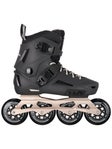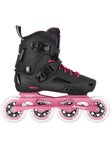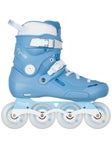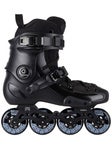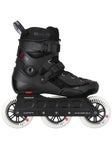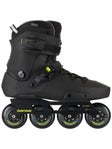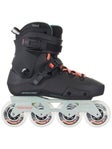How to Choose Urban Inline Skates
Urban inline skates are designed to be highly responsive and versatile skates that are capable of navigating crowded settings and unexpected obstacles with ease. Also called freestyle or freeride skates, this category has grown well beyond urban transportation and into a wider range of skill levels and skating types, including slalom and wizard skating. This guide will walk you through the basic characteristics of urban skates and the differences between them so that you can find the right skates for you!
Wheel Size
Urban inline skates are offered with wheels ranging in diameter from 76mm to 125mm, and it is important to select a wheel size that suits your skill level and the environment in which you intend to skate most.
Smaller wheels help keep speed under control and they lower your center of gravity, which is better for stability and maneuverability. That is why we recommend 76-80mm wheels for entry-level skaters, or anyone who skates in confined spaces or needs to make frequent, quick changes in direction (such as slalom/cone skating). Beginners should also seeks skates that come equipped with brakes, which become less common as wheel size increases.
Larger wheels benefit long-distance and high-speed skating,but that benefit comes at the cost of maneuverability, so use caution when selecting large wheels for crowded spaces or obstacle-heavy environments. Intermediate skaters should feel comfortable in 90mm - 110mm sizes and and should definitely familiarize themselves with the difference in wheel configurations by reading our Three vs Four Wheel Skate Comparison. 3x110mm setups might seem intimidating, but they are no more difficult to skate than a 4x90mm skate. And finally, 3x125mm configurations are best saved for strong inline skaters that have considerable ability and experience.
Boots
Most urban skates have a molded plastic shell with removable soft liners inside. This design is tough and durable on the outside, responsive to the skater's input, and comfortable to skate in. The number of cutouts or air vents in the boot will also impact how it feels. Fewer cutouts will limit ventilation but increase rigidity and response, while more vents will improve air flow and can even create a more relaxed fit and feel from the flexibility they allow. Ultimately, this is up to the skater's preference, but performance-focused skaters usually favor responsiveness over ventilation while the opposite is true for casual skaters.
The few models of urban skates that do not use molded plastic boots will use materials like carbon fiber and carbon composites. These boots are very stiff and snug-fitting, with integrated, non-removable liners that offer optimal energy transfer. These features - and the higher price tags that go with them - are meant for advanced urban and freestyle/slalom skaters.
Frames
Nearly all urban skates have strong extruded aluminum frames, most of which are removable and adjustable. A few models may have frames that are riveted to the boot, and these we label as non-removable. When frames are removable, skaters are granted the ability to adjust the position of the frame to better suit their unique stride and other preferences. It also provides the opportunity to replace the frame with a different model altogether, as long as the mount spacing on the frame matches that of the boot.
Frame length is another important characteristic, one that impacts how agile and stable skates will feel. Shorter frames are more agile and easier to turn, while longer frames add stability thanks to a longer overall wheelbase. Your preference of agility vs stability may be the difference when comparing two models that have the same wheel configuration. Keep in mind that just because two skates have the same wheel setup does not mean they have the same frame length!
One last thing urban skaters may want to look out for is whether the frame offers a "flat" setup or one that is "rockered". A flat setup is one in which all wheels are in contact with the ground. These are more common as they are smooth, stable, and easily controlled. Rockered setups, however, have one or two wheels set slightly off of the ground, just a couple of millimeters higher than the other wheels. Different combinations of rockered wheels offer various benefits for advanced skaters. Some rocker frames even allow for the adjusting of which wheels are offset, or permit switching from rockered to flat and back again!





